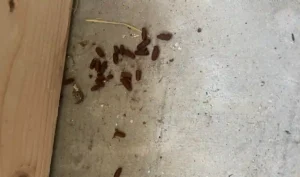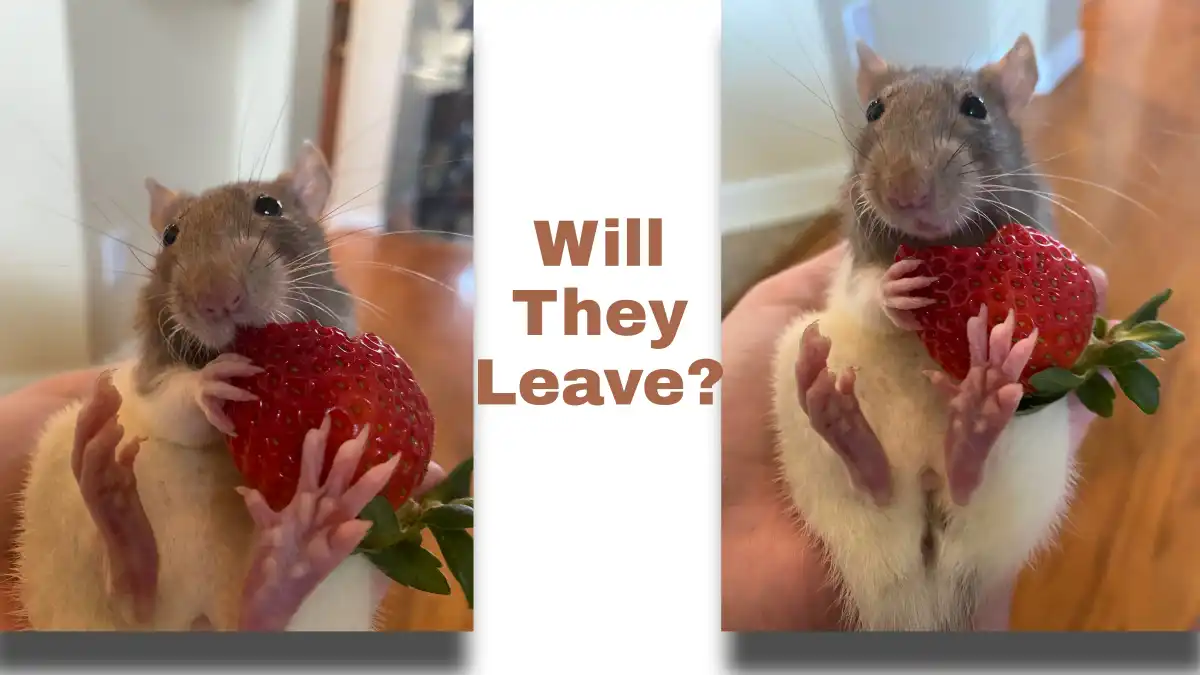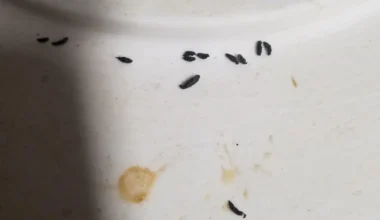No matter how tidy or decluttered your garage is, a mouse infestation is bound to disturb the usual order. And now you want to find mouse nest in garage to begin the eradication process. Let’s face it – having mice in the garage can be frustrating at best and even a bit frightening. There is no need to feel overwhelmed by the prospect of dealing with numerous mice scurrying around. With a well-thought-out plan, getting rid of mice in your garage is not as intimidating as it may initially appear.
How to Find Mouse Nest in Garage

Follow these steps to find mouse nest in garage:
Sure, let’s elaborate on the steps a bit more and add some additional considerations:
1. Look for signs of mouse activity
These could be small droppings that look like tiny, dark pellets, usually found in concentrated areas. Also, mice tend to gnaw on various objects, so look for gnaw marks on plastic, wood, or even cables.
You might also notice small holes chewed through walls or boxes, as mice often chew small passageways to get around.
2. Listen for sounds
Mice are nocturnal and are most active after dark. You might hear light scratching sounds, squeaking, or movement within walls or other hidden spaces during these hours. During the day, they are usually quiet and hidden.
3. Search in secluded and dark areas
Mice prefer to nest in quiet, dark, and cluttered areas where they can go undetected. Check storage boxes, in piles of clutter, behind or under large items, or even in the engine compartment or glove box of vehicles stored in the garage. Don’t overlook high places either; mice are skilled climbers and may nest in loft spaces or on shelving.
4. Use a flashlight
Using a flashlight will help you to better search those hard-to-see areas. Mice nests are typically made from soft materials, such as shredded paper, fabric, insulation, or other fibrous materials, and are usually small, round, and about the size of a softball.
5. Consider the smell
Mouse nests can produce a stale, musky odor due to the buildup of urine and feces. If you notice an unusual smell in your garage, especially in a particular area, it could be a sign that a nest is nearby.
6. Safety precautions
Always use gloves and a dust mask when investigating potential mouse nests or handling droppings, as mice can carry diseases that can be harmful to humans. Dispose of any droppings or nesting materials in a sealed bag.
Signs of Mice in Your Garage
Indications of a rodent infestation in your garage may manifest as an unpleasant, musky scent, witnessing your pets pawing or scratching at walls or storage areas, or stumbling upon a nest constructed from shredded paper, fiber, or cloth. Of course, the sight of a mouse itself, particularly in a dimly lit garage, is also a clear sign.
Now, you need to determine whether mice, rather than rats, are the culprits. While these tips are applicable to rats as well, you need to identify the specific rodent species to determine the most suitable method of control. Here are common signs of rodent activity that can assist you in discerning the situation:
- Droppings
- Rub marks
- Tracks
- Gnawing or chewing marks
- Audible noises
In most cases, if the first four signs are smaller in size, it indicates a higher probability of a mouse infestation. It’s important to note that mice may not always leave easily noticeable footprints, especially if your garage floor isn’t particularly dusty. However, the most distinct difference lies in the noise they make. Mice tend to squeak constantly while in their nests. On the other hand, rats are more inclined to gnaw, scratch, and engage in fights.
Having been able to find mouse nest in garage, you want to remove these nests and the critters (mice) from your property!
How to Remove Mice from Your Garage
Mice are known to reproduce rapidly, with females capable of producing over 60 offspring in a single year. The presence of favorable living conditions can lead to larger mouse populations, increasing the risk of them moving from an attached garage into your home. Follow this two-step approach to effectively eliminate mice from your garage:
1. Eliminate food sources that attract mice
Reevaluate the storage of potential food sources or nesting materials by opting for heavy-duty containers with tightly-sealed lids. In case you have an infrequently used car, periodically start the engine and rev it to deter mice. Thoroughly inspect the hood, trunk, and glove compartment for any signs of nesting materials or damage to mechanical wires.
Below is a compilation of common items found in garages that can attract mice due to their potential as a food source or nesting material:
- Accumulated clutter, such as empty boxes and old newspapers
- Bags of grain, birdseed, pet food, grass seed, or other bulk edibles
- Leftover food, snacks, and trash left inside the vehicle
- Unused or seldom started vehicles and engines
- Uncovered insulation
- Rags, towels, and outdoor clothing
- Unprotected garbage
- Burlap
- Straw bales
- Bags of mulch
- Outdoor furniture cushions
2. Set up bait stations
If mice have already established their presence in your warm garage, the most efficient approach to eliminate them is by setting up bait stations. It is crucial to strategically position an adequate number of bait stations in locations where mice are likely to encounter them.
Understanding mouse behavior is key. Mice tend to stick to familiar food sources unless necessary and have poor eyesight. When searching for food, they typically follow along walls, corners, pipes, and beams.
Therefore, areas with mouse droppings, rub marks, or other signs of activity are ideal spots for bait station placement.
Position reusable bait stations with a spacing of 8 to 12 feet apart, ensuring that you read and adhere to all instructions provided on the label. Regularly check the stations, preferably once or twice daily. Mice prefer fresh food, so if the bait in the station is old, replace it with a new bait block for a minimum of 15 days or until you are confident that the mouse problem has been resolved. For effectiveness, relocate the bait stations to new areas where mouse activity is suspected.
Always choose bait stations suitable for outdoor use and keep them out of reach of children or pets. When handling these devices, wear gloves to prevent your scent from transferring to the bait, making it more enticing to mice.
3. Keep mice at bay
Mice exhibit extraordinary physical capabilities, showcasing their prowess in running, climbing, swimming, and the ability to squeeze through openings as small as 1/4-inch.
They can leap vertically up to 1 foot and jump down from heights of approximately 8 feet. Notably, mice are adept at chewing through various materials, further demonstrating their impressive adaptability.
4. Ensure a mouse-free garage
First, conduct a thorough inspection for light infiltration, crouch down to their level, switch off the lights, and examine the ground level. Look out for any light seeping through open spaces, holes, cracks, or crevices.
a. Seal the gaps
Scrutinize the areas surrounding walls, the house’s entry door, garage windows, and openings near piping or ductwork. Make sure that your garage door shuts tightly, paying particular attention to the bottom where it meets the ground.
You also want to seal gaps and prevent mice infiltration. However, avoid materials like thin screening and rubber weather-stripping that mice can chew or shred for their nests, as well as rough surfaces that are easily gnawed. Instead, go for rodent-resistant materials such as spray expanding foam, caulk, concrete mortar, metal thresholds, galvanized sheet metal, hardware cloth, steel wool, and other suitable alternatives. Repair, patch, or plug any holes, cracks, or crevices using these materials to create a durable barrier against mice and other rodents.
b. Apply repellent scent
You can also manipulate mice sense to repel these pests. Mice have a strong sense of smell and a fondness for enticing scents, but there are certain odors they find intolerable, such as ammonia or peppermint oil. Utilizing these scents can help deter mice from entering your garage and make it an undesirable place for them to reside.
A potent scent that won’t bother humans can work, including essential oil or a pre-made product. Whatever your choice, apply it throughout the entire perimeter of the garage, both inside and outside. Reapply the repellent, particularly after heavy rainfall, as the mouse-repellent scent may become diluted or washed away.
What materials are used to construct mouse nests?
Mice are resourceful creatures and use a variety of materials to construct their nests. They typically prefer soft, fibrous materials that can be easily shredded and manipulated to form a warm, cozy nesting place. Common materials include shredded paper, cardboard, hay, straw, and fabric, but they’ll also use softer materials like feathers or fur if they’re available. In domestic settings such as garages, mice may also use insulation materials, pieces of cloth, or even bits of plastic. The materials used often depend on what’s readily available in their environment.






